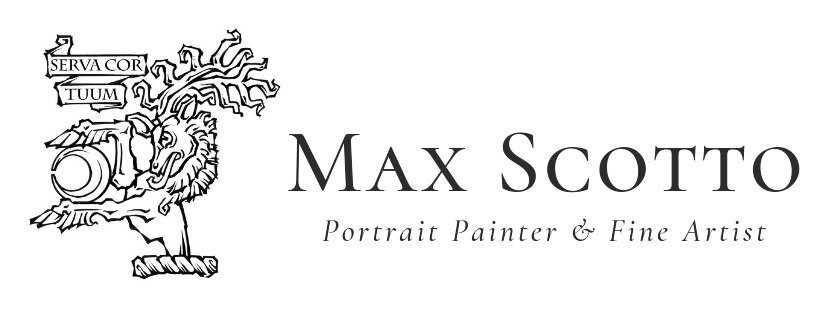During our initial communications we will discuss the details of the commission and I will lead you through some essential issues. After that we can move on to the next phase. From beginning to completion, the process that follows a commission could be divided in three stages:
1. Composition
This is the most dynamic phase for both painter and sitter. I prefer to paint from life but I can use photographs, if that is easier for my clients. The first time I meet with the sitter I may make some sketches, take photographs and discuss the particulars of the project.
After this I will continue to work on the composition in my studio. I pay special attention to the classic rules of composition because a good composition structure is the key to a successful and robust work of art.
During this stage I show my clients some sketches and I paint a colour study in oils. The study lets people see what the final painting will look like and it gives them an opportunity to provide their feedback before I start the painting.
2. Painting
Once the composition is approved, a period of intense activity will follow. I prefer to work from life with a sight-size approach which means that I paint what I see the same size I see it.
Depending on if photographs are used or not, between 2 to 6 sittings can be scheduled. I can travel to my client’s preferred locations for these sessions and I complete the rest of the painting in my studio in Fife.
I follow a classic method using a limited palette and little or no solvents or hazardous materials. Smaller pieces and studies are painted alla prima and complex portraits and compositions often require an underpainting upon which paint is applied in layers.
3. Finishing
Before the painting is completed, minor retouches may be necessary. Although, I prefer a painterly depiction rather than a hyper-realistic rendering, the level of detail and finishing will depend on what we have agreed with my client.
The frame is an integral part of the painting so I prefer to paint with the canvas framed. From the commission to the last brush stroke many months can elapse. Even after the delivery, the oils will continue to cure so I will advise how to look after the painting.
Ideally, one year later the painting should be cleaned and given a coat of varnish to protect and enhance its appearance. If it is not possible for me to carry out the varnishing, I will advise on alternatives.
My preference is to meet with the sitters in person because painting from life produces a different result. Of course, sometimes this may not be possible so in those cases I can paint using photographs as my only reference. However, unlike a machine, my goal is to create a tasteful composition looking at every element in order to do more than simply portraying a photo-copy.
